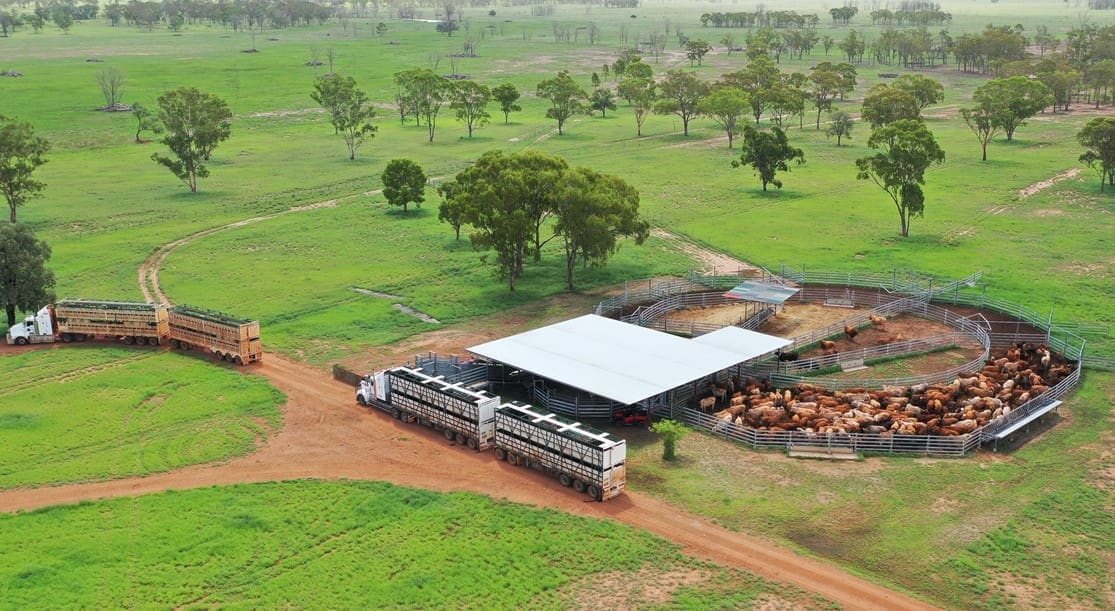
RECORD prices for rural properties are placing high pressure on the valuations industry.
As a result, valuers specialising in the rural market across the country are experiencing their strongest ever period, with a shortage of professionals hampering the process.
Broadly speaking, a large percentage of the professionals in the rural valuations industry is above 55 years of age. Progressively, more people are leaving the sector or moving into corporate or institutional valuing roles. Even government departments are struggling to attract resources at a time when there has been a spike in activity.
Tim McKinnon is the senior director of valuations for LAWD. In his 17 years’ experience in the valuation of specialised agribusiness assets, it has never been as busy, he says.
“It is happening nationally. Every valuer in the country is busy, especially in the ag space.”

Tim McKinnon LAWD
Mr McKinnon said many landholders, particularly in New South Wales, had had a good season or two, interest rates have never been lower and commodity prices are holding up well.
“Record land values are being seen across the eastern seaboard from Tasmania right through to Queensland and in some regions, there has been a doubling.”
Mr McKinnon expects the good fortunes will continue.
“As long as interest rates stay the same (or close to current levels) and commodity prices hold up, producers are anticipating a good wet season in northern Australia and a good soil profile for next year’s southern winter crops.”
“The market has been running strongly for the past 12 months, and it could be nearing the peak, which is enticing many older producers to sell up to enable succession.”
“There has been a significant change in the equity position of most producers. If they are refinancing, interest payments are coming down giving them the power to buy the next opportunity.”
Tim Lane, Herron Todd White
Tim Lane, who heads up Herron Todd White’s Agribusiness and Advisory, said expansion was driving some of the increased valuation activity.

Tim Lane HTW
“Over 12 months ago, the banks deferred some of their annual valuations during COVID. This work, coupled with the heightened market activity and some valuers exiting the industry, has seen the time-frame (on valuation jobs) blow out to 30 to 35 days in some locations.
Mr Lane said while the backlog was now starting to abate, it has been consistently busy for a long period of time.
“There is no ability to get anything done quickly, and that is the challenge. Some transactions need to be done quickly because the market is moving fast -and that is putting additional pressure on valuers.”
Mr Lane said record land prices were also pushing producers – from individuals to corporates – to get their holdings valued.
“Following a significant rise in asset values over the last three years, many producers are updating their property values understanding the process may take time.”
Mr Lane said increased valuations often gave pricing benefits to the borrower, depending on their circumstances.
“Overall, the lower the loan to the property value the safer risk for the banks, which can be a basis for clients to negotiate with their banks. Two years ago, the average time to complete a valuation was around 15 business days for a standard type property.”
Today, organising an inspection, writing the report, reviewing it and delivering it can typically take around 25 days, according to Mr Lane, due to the current demand for valuers as work volumes have increased around 40 percent in the last 18 months.
“A property that sells for around $500/ha more than anticipated can prompt locals to get their own places valued, so they can lock-in that better price for the next three years. It is one less thing they need to think about when they may have future transactions or funding needs in the execution phase.”
Mr Lane said valuers were being asked to do many different things today, because clients had higher expectations.
Grazing radius mapping based on permanent waters, increasingly carbon opportunities and capital development planning were among examples of additional work completed.
Mr Lane said the valuation space is constantly evolving, which is adding to the complexities, but also the opportunity to be more specialised.
“There is a lot more value in the reports completed by valuers beyond the number itself,” he said.
“For instance, it can take a while to get your head around a carbon job. You need to understand how the market works, the management agreement and the contract terms, and this space will continue to evolve as we see soil carbon projects hit the market,” he said.
New technology platforms
Mr Lane said Herron Todd White was looking to deploy and integrate new technology platforms into its business model in the new year.
“This aims to reduce the valuer touch-time in the whole valuation process to improve efficiency and also cater to the next generation valuer who is tech savvy, while integrating new ag-tech data which can add to the overall analysis,” he said.
HTW is also keen to recruit qualified valuers nationally, as there is still more demand for services than supply across the rural industries.
Mr Lane does not see this changing quickly, which creates challenges but also opportunity for innovation and new solutions in the market.
As part of this, HTW is looking to launch an intern program in a bid to recruit graduates. It is also currently assisting in the development of some valuation training courses to create demand, “and hopefully ‘catch and keep’ a few of those valuers for our own business,” he said.
“What a wonderful career opportunity right now – to have a professional career with all the benefits of regional living,” Mr Lane said.
Will Gurry, JLL
Will Gurry, the head of agribusiness at JLL, said low interest rates were putting added pressure on the shortage of good quality young professionals, coupled with a high level of demand in the agricultural valuation market.

Will Gurry JLL
“For the first time in a long time, demand is across the board. There is no particular location or particular sector that stands out. Everyone is enjoying good farm income coupled with low interest rates.”
Mr Gurry said the valuation demand was twofold.
“Many producers are seeking additional country, while others are refinancing to support development. So, if they are not buying, they are choosing to improve their property, including upgrading infrastructure.”
Mr Gurry said as a result of the demand, there are some delays in turnaround.
“It is due to the sheer work volume, not any lack of endeavour from any firm out there – we are all working pretty hard.”
He said the shortage of valuers was highlighted by the increase in the volume of valuations required over the past 12 months.
“The situation won’t improve until interest rates rise, and I am not talking about a quarter percent – it would have to be one or two percent to slow down what we are current experiencing.”
John Harrison, Colliers Agribusiness
Head of valuation and advisory services at Colliers Agribusiness, John Harrison, said every valuer was facing high levels of demand.

John Harrison
“The valuation space is extremely busy – the busiest I have experienced in my career – and it doesn’t appear to be slowing down.”
Mr Harrison said demand was coming from across the board.
“Everywhere is busy – it is not limited to one particular state or territory. A number of lenders sat on valuations during COVID-19 and that has created a backlog of work which subsequently snowballed in terms of time-frames.”
Mr Harrison said the current demand meant there was no end in sight.
“Low interest rates and high commodity prices have given producers the confidence to borrow more money to expand and as a result, valuation services will continue to be sought after, despite a lack of listings and immediate buying opportunities.”
Mr Harrison said the strong valuation demand was being impacted by a shortage of agri-valuers and as a result, turnaround times are slower.
“It is currently difficult to service a settlement with a two or three week timeframe, because we are committed to completing existing work. It is all about being realistic and keeping clients informed throughout the process.”
He said valuations are being carried out for a number of purposes.
“Banks are requiring updated property valuations for mortgage security, particularly because there has been such strong growth in land values. It is important for both property owners and the banks to know where values are sitting.”
“Property owners are unlocking their equity to buy and get bigger. We are seeing potential buyers revalue their assets and line up their ducks – ready to confidently bid when the opportunity arises,” he said.
Mr Harrison said demand was also coming from those engaging in succession planning.
Some property owners may have never engaged an independent valuation of their assets and were now seeking an accurate assessment to plan for the future.
Mr Harrison said the moving market was challenging for valuers.
“We are seeing values across different regions achieve new heights, week after week, creating new benchmarks – and this makes it difficult to put values on properties at the moment as the market is moving so rapidly.”

Comment-limited by ‘words-permitted’ on a long ‘valuation’ dissertation. “Valuation’ and ‘attainable- price’ are not the same, especially with unlimited alien bidding distortions.
Commercial valuation can be complex, formula and statistic driven . Residential valuation is simple and most information comes from ‘recent sales’…which is not a measure of value. I have read $multi-thousand valuations as thick as the bible which are re- statements of the obvious, nothing indicating REAL value increase ending with 10% exactly added to the previous valuation. Factually there are three ways to VALUE rural property and ‘value adding’…e.g. bore sinking, pasture ‘improvement’ using chemicals may in fact ‘long term’ reduce its real value …as should its vulnerability to climate change/social disntegration.
REAL property VALUE increases only with true value-adding improvements by proprietor or authortities. Examples… significant property rectification/additions/re-landscaping. By authorities value-improved may be social amenities/access , reduced crime rate/sewage introduced over septic for example.
Valuers blatently confuse ‘price and value. ‘Value’ is not what an alien is prepare to pay to empower themselves in Australia or a dentist for investment and tax purposes. Carbon (mentioned in article) /bio-security credits have a massive cost to establish..$100,000 doesn’t go far…towards proposals for government appoval…which may never be given and if given is fundamentally in-scheme-practice unstable as I have proved to their angst and ‘credits’ may never find a ‘taker’… government makes that clear….as it has (NSW) that it now ‘owns’ all ‘bio-critters’ residing on a property.